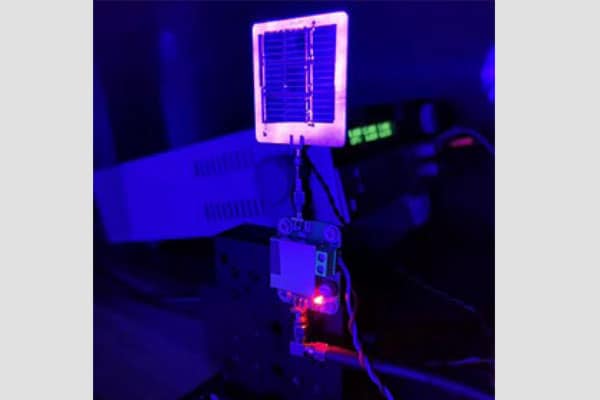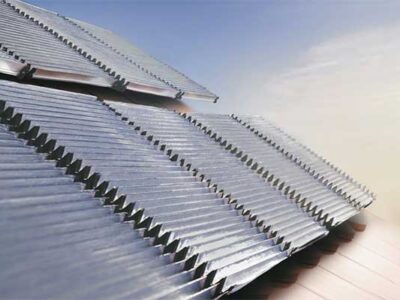- Researchers have shown that solar cells can be used to achieve underwater wireless optical communication with high data rates.
- The new approach, which used an array of series-connected solar cells as detectors, could offer a cost-effective, low-energy way to transmit data underwater.
Although solar cells are typically designed to turn light into power, researchers have shown that they can also be used to achieve underwater wireless optical communication with high data rates. The new approach — which used an array of series-connected solar cells as detectors — could offer a cost-effective, low-energy way to transmit data underwater.
“There is a critical need for efficient underwater communication to meet the increasing demands of underwater data exchange in worldwide ocean protection activities,” said research team leader Jing Xu from Zhejiang University in China. For example, in coral reef conservation efforts, data links are necessary to transmit data from divers, manned submarines, underwater sensors and unmanned autonomous underwater vehicles to surface ships supporting their work.
In the Optica Publishing Group journal Optics Letters, Xu and colleagues report on laboratory experiments in which they used an array of commercially available solar cells to create an optimized lens-free system for high-speed optical detection underwater. Solar cells offer a much larger detection area than the photodiodes traditionally used as detectors in wireless optical communication.
“To the best of our knowledge, we demonstrated the highest bandwidth ever achieved for a commercial silicon solar panel-based optical communication system with a large detection area,” said Xu. “This type of system could even allow data exchange and power generation with one device.”
Optimizing solar cells for communication
Compared to using radio or acoustic waves, light-based underwater wireless communication exhibits higher speed, lower latency and requires less power. However, most long-distance high-speed optical systems are not practical for underwater implementation because they require strict alignment between the transmitter emitting the light and the receiver that detects the incoming light signal.
Because solar cells detect light from a large area and convert it to an electrical signal, using them as detectors can ease the transmitter-receiver alignment requirement in an underwater wireless communication system. However, it has been difficult to achieve high bandwidth because solar cells are optimized for energy harvesting rather than communication.
“Until now, achieving high-speed links using off-the-shelf silicon solar cells has required complex modulation schemes and algorithms, which need intense computing resources that use extra power and create a high processing latency,” said Xu. “Using modeling and simulation of connected solar cells, we optimized the peripheral circuit, which significantly improved the performance of our solar cell-based detector.”
Underwater testing
The researchers tested the new design, which used a 3×3 solar array to create a detection area of 3.4 × 3.4 centimeters, in a 7-meter-long water tank that emulated an underwater channel. Mirrors were used to extend the pathlength of the optical signal, creating a transmission distance of 35 meters. The system showed reliable stability, low power consumption and high performance. As the size of the solar array increases from 1×1 to 3×3, the ?20-dB bandwidth increases from 4.4 MHz to 24.2 MHz.
Even though a simple modulation scheme was used, the new system exhibited a much higher detection bandwidth — which leads to a higher data rate — than has been reported in other studies using commercial silicon solar cells with a large detection area as detectors. Applying a reverse bias voltage of 90 V boosted the bandwidth further, allowing them to achieve a ?20-dB bandwidth of 63.4 MHz. This bandwidth enabled a 35-m/150-Mbps underwater wireless optical link using the simplest form of amplitude-shift keying modulation.
“Because solar cells are mass produced, the proposed scheme is quite cost effective,” said Xu. “Beyond the underwater world, this type of detector could also be used in visible light communication, a type of wireless communication that uses visible light from LEDs and other sources to transmit data across distances.”
To optimize the system for real-world applications in underwater communication, the researchers plan to next study its performance with weak optical signals. This will show how well it works in muddy water and with movement. They are also working to make the system more practical by fine tuning key parameters like the number of solar cells in the array and the required reverse bias voltage.
—
Publication Referenced in the Article:
Zhijian Tong, Xingqi Yang, Hao Zhang, Yizhan Dai, Xiao Chen, Jing Xu. Series-connected solar array for high-speed underwater wireless optical links. Optics Letters, 2022; 47 (5): 1013 DOI: 10.1364/OL.449466
—
This article was written by the team at Optica.














Comments